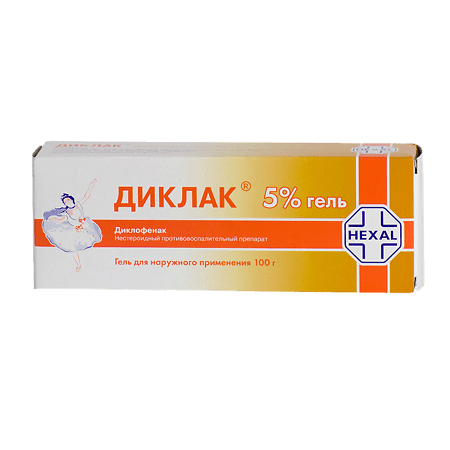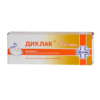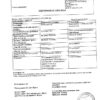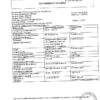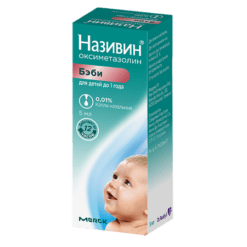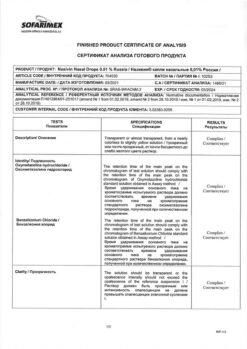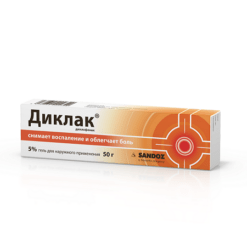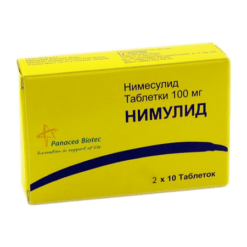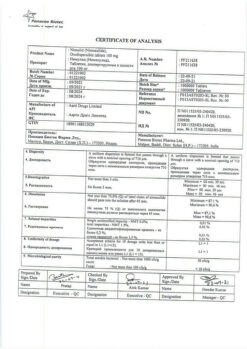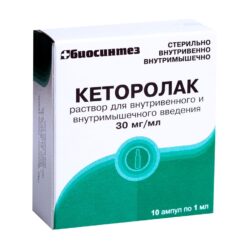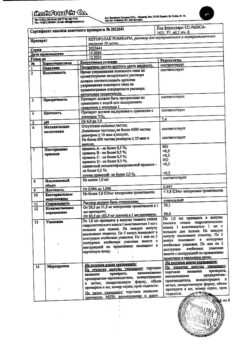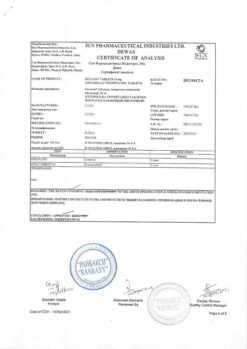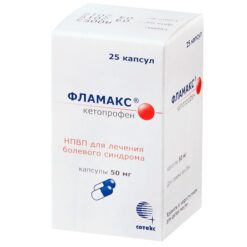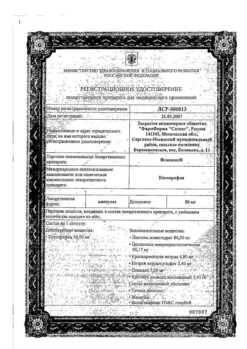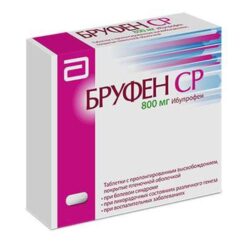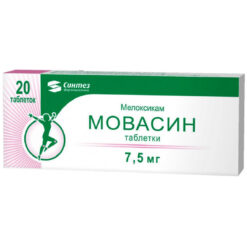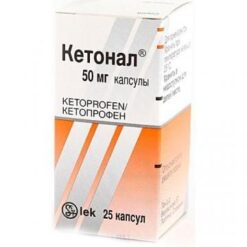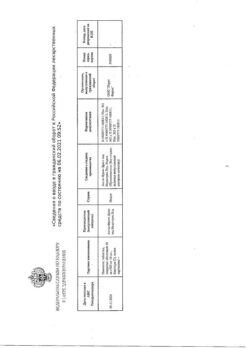No products in the cart.
Diclac, gel 5% 100 g
€13.78 €11.49
Description
Pharmacotherapeutic group:
Non-steroidal anti-inflammatory drug (NSAID).
ATC code: M02AA15
Pharmacodynamics
The active ingredient diclofenac is a non-steroidal anti-inflammatory drug (NSAID) with pronounced analgesic and anti-inflammatory properties.
By indiscriminate inhibiting cyclooxygenase type 1 and 2 (COX 1 and COX 2) it disrupts metabolism of arachidonic acid and synthesis of prostaglandins which are the main link in development of inflammation.
Diclofenac is used to reduce inflammation and pain syndrome and to decrease swelling associated with inflammation.
Pharmacokinetics
When diclofenac is applied in the recommended route of administration, no more than 6% is absorbed. When applied to the affected joint area, the concentration in synovial fluid is higher than in blood plasma.
Selected patient groups
In patients with impaired renal function there is no accumulation of diclofenac and its metabolites.
In patients with chronic hepatitis or subcompensated cirrhosis the pharmacokinetics and metabolism of diclofenac are comparable to those of healthy patients.
Indications
Indications
– Diseases of the musculoskeletal system: Rheumatoid arthritis, psoriatic arthritis, ankylosing spondylitis, osteoarthritis of peripheral joints and spine; rheumatic soft tissue lesions.
– Muscle pain of rheumatic and non-rheumatic origin.
– Traumatic soft tissue injuries.
Active ingredient
Active ingredient
Composition
Composition
100 g of the drug contains:
the active ingredient:
diclofenac sodium – 5.0 g;
excipients:
Isopropyl alcohol, 45.0 g;
purified water, 40.8 g;
macrogoal-7-glycerol cocoate – 6.0 g;
hypromellose – 3.0 g;
“Bouquet” fragrance oil WN 4507 – 0.2 g.
How to take, the dosage
How to take, the dosage
Externally. Adults and children over 6 years of age apply the drug to the skin 2-3 times a day and gently rub it in.
The amount of the drug depends on the size of the painful area.
A single dose of the drug is up to 2 g (about 4 cm with the tube’s neck fully open).
Hands should be washed after the application of the drug.
The duration of treatment depends on the indication and the observed effect.
After 2 weeks of using the drug, a doctor should be consulted.
Interaction
Interaction
Simultaneous use of the drug Diclac with digoxin, phenytoin or lithium drugs may increase plasma concentrations of these drugs; with diuretics and hypotensive agents – possible decrease in the effect of these drugs; with potassium-saving diuretics – possible development of hyperkalemia; with acetylsalicylic acid – decrease in plasma concentrations of diclofenac and increased risk of side effects.
Diclofenac may increase the toxic effects of cyclosporine on the kidneys.
Diclofenac may cause hypo- or hyperglycemia, therefore concomitant use with hypoglycemic agents requires control of blood glucose concentration.
When using methotrexate for 24 hours before or after taking Diclofenac it is possible to increase the concentration of methotrexate and increase its toxic effect.
When concomitant use with anticoagulants regular monitoring of blood clotting is required.
Special Instructions
Special Instructions
Diclac® should only be applied to intact skin, avoiding contact with open wounds.
An occlusive dressing should not be applied after application.
Please avoid contact with eyes and mucous membranes.
Impact on the ability to drive vehicles, machinery
Not applicable.
Special precautions for disposal of unused product
No special precautions are necessary for disposal of unused product.
Contraindications
Contraindications
Hypersensitivity to diclofenac or other components of the drug, acetylsalicylic acid or other NSAIDs, “aspirin” asthma, pregnancy (III trimester), lactation, children (under 6 years), skin integrity disorders.
With caution: hepatic porphyria (exacerbation), erosive-ulcerative lesions of the gastrointestinal tract, severe liver and renal function disorders, chronic heart failure, bronchial asthma, older age, pregnancy I and II trimester.
Side effects
Side effects
According to the World Health Organization (WHO), adverse reactions are classified according to their frequency of occurrence as follows: Very common (â¥1/10), common (â¥1/100, < 1/10), infrequent (â¥1/1000, < 1/100), rare (â¥1/10000, < 1/1000) and very rare (< 1/10000); frequency unknown – the incidence could not be determined from available data.
Immune system disorders Very rare: allergic reactions, hypersensitivity (including urticaria, angioedema, bronchospasm).
Respiratory system disorders very rare: bronchial asthma.
Skin and subcutaneous tissue disorders frequently: dermatitis (including contact dermatitis), erythema, eczema, itching, swelling of the treated skin area, rash (papules, vesicles), peeling; rarely: bullous dermatitis, pustular rash; very rarely: photosensitization, generalized skin rash.
Overdose
Overdose
The extremely low systemic absorption of the active ingredient when used topically makes overdosing almost impossible.
Similarities
Similarities
Additional information
| Weight | 0.132 kg |
|---|---|
| Shelf life | 3 years |
| Conditions of storage | At a temperature not exceeding 25 °C |
| Manufacturer | Salutas Pharma GmbH, Germany |
| Medication form | gel for external use |
| Brand | Salutas Pharma GmbH |
Other forms…
Related products
Buy Diclac, gel 5% 100 g with delivery to USA, UK, Europe and over 120 other countries.

